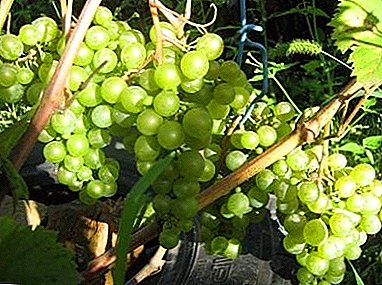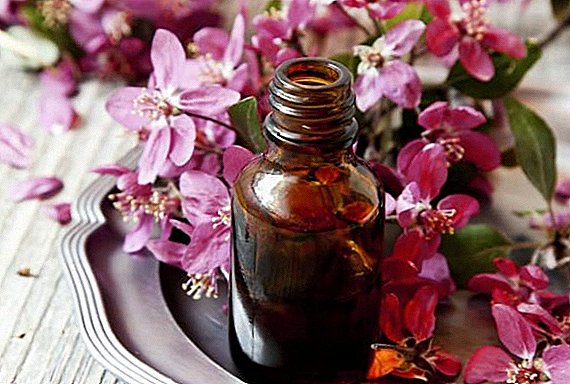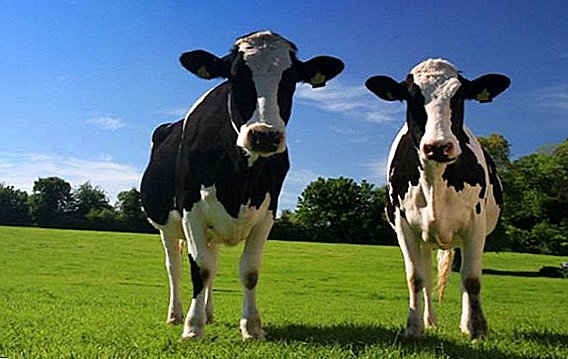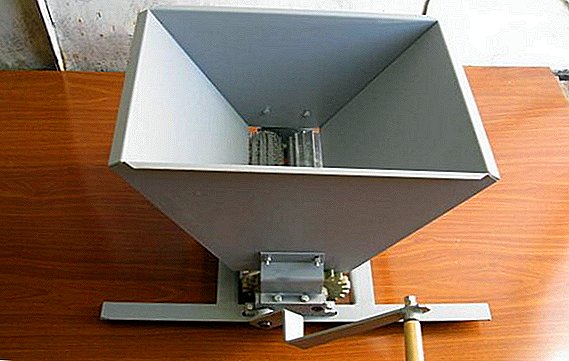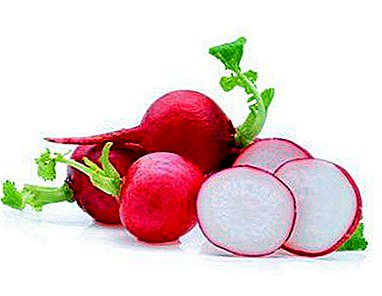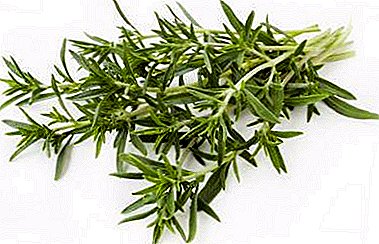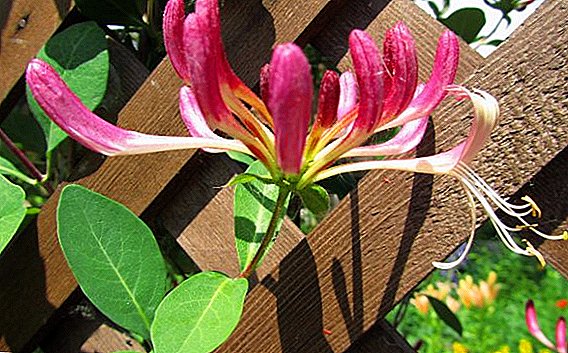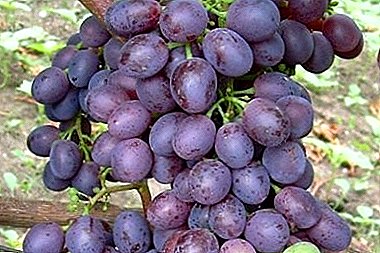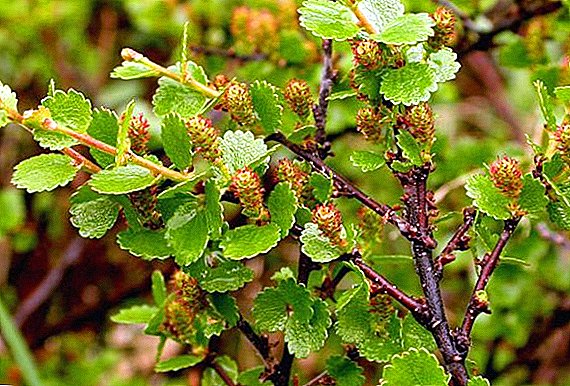 For arranging the backyard plot, expensive exotic plants are often purchased that require a lot of attention and cost. Today we will discuss an excellent dwarf version of our usual birch tree. You will learn where the dwarf birch grows, what it is and how difficult it is to grow it.
For arranging the backyard plot, expensive exotic plants are often purchased that require a lot of attention and cost. Today we will discuss an excellent dwarf version of our usual birch tree. You will learn where the dwarf birch grows, what it is and how difficult it is to grow it.
Description
Dwarf birch is a small shrub that has a height of 20 to 70 cm. The leaves of mini-birch are round or oval, reach a length of 15 cm, have jagged edges. In autumn, as with most trees, the leaves turn bright red, creating a beautiful picture.  The fruit is a small nut, which has a length and width of several millimeters. Fruiting occurs from May to June.
The fruit is a small nut, which has a length and width of several millimeters. Fruiting occurs from May to June.
In appearance, the birch resembles a creeping shrub, the shoots of which grow roots and cling to the soil. Thus, one bush can occupy a significant area.
Important! In nature, the tree reproduces only vegetatively.
Popular varieties
You've learned what a dwarf birch looks like, now let's talk about possible varieties that look more decorative than a wild version.
Golden Trezhe  It is a miniature version, which is from 60 to 80 cm, has a diameter of not more than 1.5 m. The shoots are densely arranged, the leaves are painted in a salad color.
It is a miniature version, which is from 60 to 80 cm, has a diameter of not more than 1.5 m. The shoots are densely arranged, the leaves are painted in a salad color.
This variety is used not only to decorate the Alpine hills, where it is planted in the marshy lowlands, but also for hedges. A shrub grows 10 cm in a season, so you don’t have to wait several years to see the “adult” version of Golden Trezhe.
For the decoration of the alpine slide, iberis, kupena, silverweed, lithnis, young, fescue, alissum will also be an excellent variant.
Unfortunately, other varieties of birch can not be called dwarf, as they grow up to 4-6 m in height and require completely different conditions. Therefore, if you want to buy a dwarf birch, then you will hardly be able to find some other option.
Did you know? Broths and infusions from the leaves of yernik help with male infertility, increase potency, remove salts and stones from the kidneys.
Where does dwarf birch grow?
Low-growing birch is also called yernik and slate. It grows in northern regions around the world (Europe, Canada, Russia). You can even meet a miniature tree in the Alps at an altitude of several thousand meters. Dwarf birch grows in the tundra, where mosses and lichens cover the marshy soil. If you take the territory of the Russian Federation, then you can meet it in nature in Yakutia, Siberia and Kamchatka. 
Lighting and location
The dwarf birch, though it can withstand extremely low temperatures, however, has quite high requirements for lighting and space. It is impossible to grow a shrub in the shade, at least it should be penumbra, and ideally - a sunny place. In this case, the plant will be less sick and grow faster. You need to choose a place where usually a lot of melt water is collected in the spring. Any more or less illuminated lowland where no more valuable crops or trees can be planted.
Important! The shrub can tolerate short-term droughts without any problems.

Soil for mini birch trees
If you are going to land Yernik in the lowland, then take care of good soil and drainage. It is highly undesirable to use clay or other moisture-absorbing soil variants, as the shrub cannot always evaporate a large amount of moisture, and the culture is not insured from rotting.
Therefore, when planting, we necessarily put drainage in a hole and use the soil that best conducts moisture.
Important! The substrate must be acidic or slightly acidic.
Planting a plant
Next, we will talk about planting options both vegetatively and generatively. We indicate which option will give the best survival rate.
Seeds
Planting seeds can be carried out immediately after harvest, and in the fall. Seeds should not be afraid of frost, therefore, additional warming of the soil is not necessary.  Before sowing, it is advisable to double-check all the seeds and dry them well. Next, choose a place according to the criteria described above and produce sowing. It is necessary to make several furrows, 5 cm deep and up to 10 cm wide. Pour out all the seed and carefully wrap the soil. The distance between the furrows should be at least 30 cm. It is worth remembering that every year the seeds lose their germination, so it is advisable to sow them in the same year when they were collected.
Before sowing, it is advisable to double-check all the seeds and dry them well. Next, choose a place according to the criteria described above and produce sowing. It is necessary to make several furrows, 5 cm deep and up to 10 cm wide. Pour out all the seed and carefully wrap the soil. The distance between the furrows should be at least 30 cm. It is worth remembering that every year the seeds lose their germination, so it is advisable to sow them in the same year when they were collected.
Seedlings
Let's start with the selection of seedlings. Ideally, buy the option that is in the container, as there is no danger of damage or drying of the roots. Always completely check the condition of the seedling at the time of purchase.  A few days before planting, a pit is dug out, 1-1.5 m in diameter. The lower soil is removed and the upper is mixed with humus, peat, fertile garden soil, sand and mineral fertilizers so that the seedling roots do not come into contact with pure humus or mineral water. .
A few days before planting, a pit is dug out, 1-1.5 m in diameter. The lower soil is removed and the upper is mixed with humus, peat, fertile garden soil, sand and mineral fertilizers so that the seedling roots do not come into contact with pure humus or mineral water. .
Next is planting, during which the roots of the plant are not separated from the earthy coma (if present). If there is no coma, then it is advisable to soak the roots in water, holding them for several hours. First, we line the bottom of the pit with drainage, which can be represented by small pebbles, rubble or expanded clay. Layer should be about 15-20 cm.  Next, pour out some soil mixture so that a mound forms in the center, onto which we will plant an earthen clod with roots. After placing the seedling in the hole, adjust it so that it grows up and not aside. Pour out the remaining earthen mixture, lightly tamping it.
Next, pour out some soil mixture so that a mound forms in the center, onto which we will plant an earthen clod with roots. After placing the seedling in the hole, adjust it so that it grows up and not aside. Pour out the remaining earthen mixture, lightly tamping it.
At the end we water the bush and mulch it, if this option is acceptable to you. 
Did you know? In northern latitudes, birch pollen sometimes causes seasonal hay fever in people with heightened sensitivity.
How to care for shrubs?
After landing, you need to take care of proper care of the northern beauty, to ensure proper development. Let's also talk about crown formation.
Watering and feeding
It is worth starting with the fact that the bush “fights” with excessive moisture very well, evaporating up to 250 liters of moisture through the leaves during the season. Such scales suggest that even the slightest drying out of the soil should not be allowed, otherwise the birch will draw out and evaporate the remaining moisture, begin to dry or ache. Exactly because of this reason water should be plentiful, constantly maintaining the soil moisture. Of course, if in the place of planting water accumulates year-round, then watering is carried out only in summer.  Speaking of fertilizing, we pay attention not only to the "mineral water", but also to humus. In the spring we apply nitrogen or complex fertilizers, as well as humus or compost. In the fall, nitroammofosku or similar fertilizer.
Speaking of fertilizing, we pay attention not only to the "mineral water", but also to humus. In the spring we apply nitrogen or complex fertilizers, as well as humus or compost. In the fall, nitroammofosku or similar fertilizer.
Important! Regardless of the nutritional value of the soil, it is necessary to fertilize the birch annually.
Pruning
Pruning begin to carry out the second year after landing. Sick, dry and damaged branches are removed before the start of sap flow, in early spring. Formation of the crown is better to do it in the spring, but you can cut overgrown branches in August.
Important! Dwarf birch tolerates shaping pruning.
Diseases and pests
If you have not previously treated the planting with insecticides, then yernik may be occupied by the hawk moth caterpillars, goldfish, aphid and moth. As soon as you notice signs of damage, treat with any drug from the proposed list: "Aktara", "Aktellik", "Envidor", "Karate" or "Confidor". 
Important! A scoop and a cockchafer are considered the most dangerous for birch. As soon as at least one pest was noticed, we immediately treat it with insecticides.
The shrub can also be affected by fungal diseases or infections, which virtually any fungicide of a broad spectrum of action can easily cope with.
We recommend monthly treatment with insecticides and fungicides to prevent any problems. The bush will not suffer from chemistry, and you will be sure that nothing will happen to the decorative birch.
Now you know what a dwarf birch is and how to grow it on a garden plot. Although the tiny version is not particularly demanding, it is worth creating minimal conditions for it, maintaining that you will achieve the perfect growth and development of the plant.


